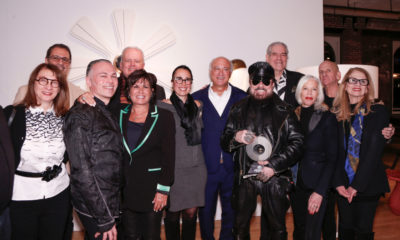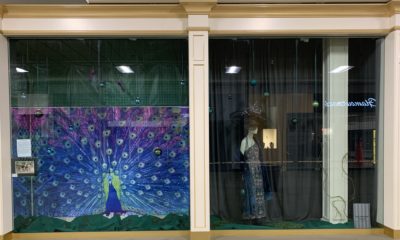OVER THE MILLENNIA we have designed and built places purely for engagement. These were public places where gathering and shared meaning of engagement was the goal. The buildings – public squares, parks, sports and entertainment centers, theaters, stores and malls – have all served to provide the venue for the exchange of goods and services as well as ideas; ideas that established understanding and meaning of what it means to be part of the community, culture, city, state, country and a citizen of the universe.
Today we face an inherent challenge in building brand experience places, whether customer engagements are in stores, restaurants, hotels or other places where brands make their mark. Places where significant civic engagement happened were built to last. It used to be that architecture was built to last forever. No literally. The pyramids have been around a long, long time. Roman structures, churches, grand public buildings — all these places were intentionally meant to stand the test of time.
Over time we have come to build less for eternity and have become more adaptable to ephemerality. We recognize more these days that things don’t last forever. Nor perhaps should they. While there are undoubtedly architectural historians and philosophers who are more skilled at describing the essence of architecture and its socio-cultural and theo-anthropological significance better than me, I see that the poetry and the perceived permanence of architecture may be changing in a digitally oriented society where the ephemeral is inherent in the evolving medium of digital human expression.
In short, moments are replacing monuments. And, for an emerging cohort of brand experience seekers, that may just be okay.
The challenge in the “built to last” paradigm is that it is out of step with our fast-moving digitally enabled times. In the hospitality industry, barring major impediments to the process, it takes about four or five years to design and build a new property. Typically, it is another seven years before a renovation of soft goods – carpets, wall covering, FF&E, things that move or can be easily removed. It is another seven years before the next renovation cycle where case goods, cabinetry, fixed furniture, flooring, porcelain wall surfaces, lighting, bed headboards and integrated reading lights, et cetera, are replaced. All totaled, assuming that the property has not been sold or “re-flagged” to a new brand, about 18 or 19 years will pass before a property will have undergone a major re-positioning or comprehensive renovation from the original concept.
There is nothing in my 18- or 21-year-old sons’ lives that lasts for more than 19 minutes, never mind 19 years. And yet, the hospitality industry keeps on putting product out in the market that is meant to last “forever,” at least as my sons would conceptualize it. If one follows the pure economics of hotel development and when investments really begin to pay off, it isn’t until about five years after opening that owners are making real money and getting a respectable return on their initial investment. It’s not so surprising then that the renovation cycle for hotel properties tends to be a few years after this financial inflection point. It is also not so surprising that it is around the same time that owners consider selling just at the point where they are going to be required by franchise agreements to invest yet more in the first soft goods renovation. Whether new or existing owner, the first big change up is happening only after about 11 years from concept creation. In the context of the present mobile-dependent economy that my sons are growing up in, this is a digital eternity.
Advertisement
Retailers are a step ahead of the hotel industry, reacting more quickly to shifting customer sentiments and refreshing stores based on seasons and holidays rather than the pure economics of hotel development. The world of retail has even created holidays like Black Friday, Cyber Monday and Back to School to keep them “in the black” on the balance sheet. As a result, they bring new goods to market and refresh the in-store experience for their customers. This is all good from an experience point of view and generally good as well for creating an incentive to get customers in the store.
The challenge still is that buildings last. They take a long time to come to fruition and last much longer than the attention span of an emerging guest. This begs the question about the relevancy of built environments to a cohort of experience seekers. Context plays a significant role in establishing meaning. Buildings have a time stamp on them and, in many ways, are a freeze-frame in cultural experience.
The problem with architecture, and by association brand experience places, as a motion-capture of a culture’s trajectory, is that it does not align with the fluid nature of experience as lived by today’s new generation. How do younger consumers develop an appreciation for what architecture means when it was built in a context to which they have no connection? Do current monuments mean anything to them? Or are they swept by a pace of change that makes all things seem to be continually receding into the past. What if buildings were not static? What if instead of being built in a system that necessarily rendered them obsolete before they were actually experienced, brand experience places were where shape-shifters tapping into the flow of the digital narrative of contemporary consumers lives? What if the dialogue of experience was not just between those who experience place but also included the actual environment as well as its inhabitants? Could digital dialogue extend between the experiencer and the experienced? Would this suggest that buildings would not be meant to last but created for the moments in which we engaged with them?
Questions such as these strike at what degree of permanence is necessary in the making of place and whether or not transformable places are simply better aligned with the ephemeral nature of today’s digitally enabled lived experience? It may suggest that we retain the core essence of experiences, the ideological reference points, and allow for the fluid expression of meaning in places that are time stamped to the moment, followed by decomposition and re-definition in a continual cycle of adaptation – a dynamic dance between the user and environment. The challenge for brands, or cultural institutions, is to have core ideological pillars that are so well defined that regardless of the incarnation of the built environment in which they are brought to life, they are identifiable. If we strip away the aesthetic expression of brand experience place could we still identify the purpose, meaning and values that are its underpinning?

 Photo Gallery6 days ago
Photo Gallery6 days ago
 Headlines2 weeks ago
Headlines2 weeks ago
 Headlines6 days ago
Headlines6 days ago
 Headlines1 week ago
Headlines1 week ago
 Headlines2 weeks ago
Headlines2 weeks ago
 Headlines7 days ago
Headlines7 days ago
 Designer Dozen2 weeks ago
Designer Dozen2 weeks ago
 Special Reports2 weeks ago
Special Reports2 weeks ago




















